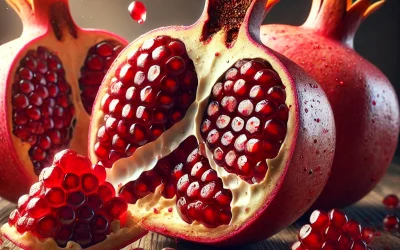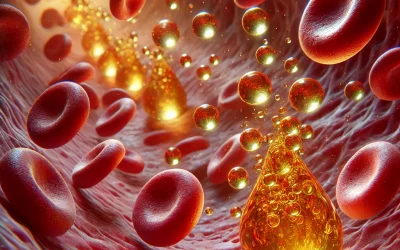Introduction
Diabetes is a chronic metabolic disorder affecting millions worldwide, with type 2 diabetes being the most prevalent form. Managing blood sugar levels is essential for preventing complications such as heart disease, kidney failure, and nerve damage. While medications and lifestyle changes are the primary ways to control diabetes, natural remedies like cinnamon have gained attention for their potential benefits. But does cinnamon truly help with diabetes? Let’s explore the science behind it.

Understanding Cinnamon
Cinnamon is a spice derived from the bark of Cinnamomum trees, widely used in cooking and traditional medicine. There are two primary types of cinnamon:
- Cassia Cinnamon (Cinnamomum cassia) – The most common variety, but high in coumarin, which can be toxic in large amounts.
- Ceylon Cinnamon (Cinnamomum verum) – Known as “true cinnamon,” it has lower coumarin levels and is considered the safer option for regular consumption.
How Cinnamon Affects Diabetes
Scientific studies suggest that cinnamon may help with blood sugar regulation in several ways:
1. Enhances Insulin Sensitivity
One of the primary issues in type 2 diabetes is insulin resistance, where the body’s cells become less responsive to insulin, leading to high blood sugar.
- Cinnamon has been found to increase insulin sensitivity by mimicking insulin’s action and helping cells absorb glucose more effectively.
- A study published in the journal Diabetes Care found that cinnamon reduced fasting blood glucose levels in people with type 2 diabetes.
2. Lowers Fasting Blood Sugar Levels
Several studies indicate that cinnamon may reduce fasting blood glucose by 10% to 29%, making it a potential supplementary aid for diabetes management.
- A meta-analysis in Annals of Family Medicine concluded that cinnamon significantly lowers blood sugar levels in people with diabetes.

3. Reduces Post-Meal Blood Sugar Spikes
High blood sugar levels after meals can contribute to long-term diabetes complications.
- Cinnamon may help slow down the digestion of carbohydrates, leading to a gradual release of glucose into the bloodstream.
- This effect is due to cinnamon’s ability to inhibit digestive enzymes that break down carbohydrates.
4. Lowers Hemoglobin A1c (HbA1c)
HbA1c is a measure of long-term blood sugar control over 2-3 months. While research is mixed, some studies suggest cinnamon slightly lowers HbA1c levels, indicating better blood sugar management over time.
5. Anti-Inflammatory and Antioxidant Effects
Chronic inflammation is a major contributor to insulin resistance and diabetes-related complications.
- Cinnamon contains powerful antioxidants, such as polyphenols, that help reduce oxidative stress and inflammation.
- These properties may protect against complications like nerve damage, kidney disease, and heart problems.
6. May Help Reduce Cholesterol and Blood Pressure
People with diabetes are at a higher risk of heart disease, making it essential to manage cholesterol and blood pressure.
- Cinnamon has been shown to lower LDL (bad cholesterol) and increase HDL (good cholesterol).
- Some research suggests it may also help lower blood pressure, reducing cardiovascular risks for diabetics.
How to Use Cinnamon for Diabetes
If you’re considering adding cinnamon to your diabetes management plan, here are some guidelines:
Recommended Dosage
- Studies suggest a daily intake of 1 to 6 grams (¼ to 1 teaspoon) of cinnamon can be beneficial.
- Ceylon cinnamon is preferred over Cassia cinnamon due to its lower coumarin content.
Ways to Consume Cinnamon
- Sprinkle it on oatmeal, yogurt, or smoothies.
- Add it to tea, coffee, or warm water with honey.
- Use it as a spice in meals like curries or soups.
- Take it in supplement form (check for quality and dosage recommendations).
Precautions and Risks
While cinnamon offers potential benefits, it’s important to use it responsibly:
- Not a Substitute for Medication – Cinnamon should not replace diabetes medication but can be used as a complementary aid.
- Coumarin Toxicity – High doses of Cassia cinnamon can be harmful to the liver due to its coumarin content. Ceylon cinnamon is a safer choice.
- Blood Sugar Monitoring – If you take diabetes medication, consult your doctor before using cinnamon, as it may lower blood sugar too much, leading to hypoglycemia.
- Allergic Reactions – Some individuals may be allergic to cinnamon, so start with small amounts.
Conclusion: Can Cinnamon Help with Diabetes?
Cinnamon shows promise as a natural aid for blood sugar control, insulin sensitivity, and reducing inflammation in people with diabetes. While it is not a cure, incorporating cinnamon into a balanced diet may provide additional support for managing type 2 diabetes.
However, it is essential to use Ceylon cinnamon in moderate amounts and consult a healthcare provider before making significant changes to your diabetes management plan.





































